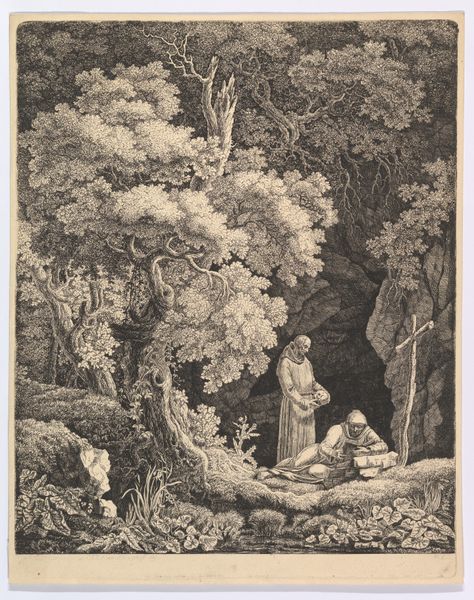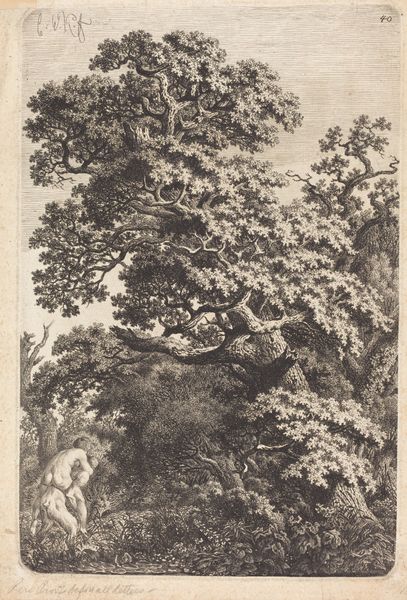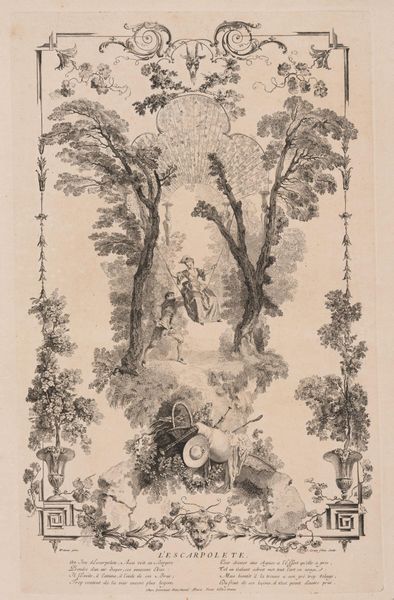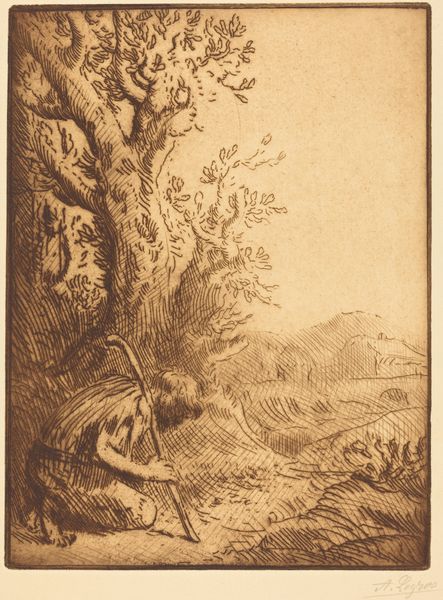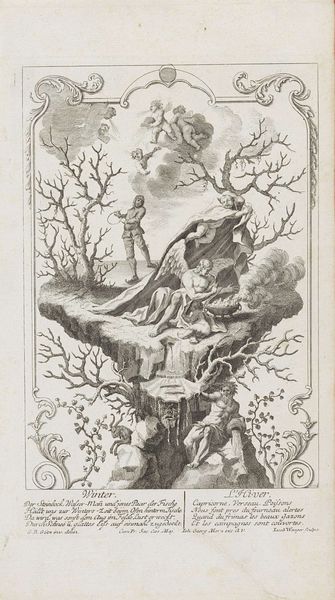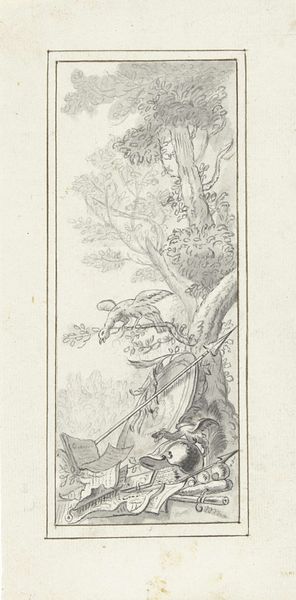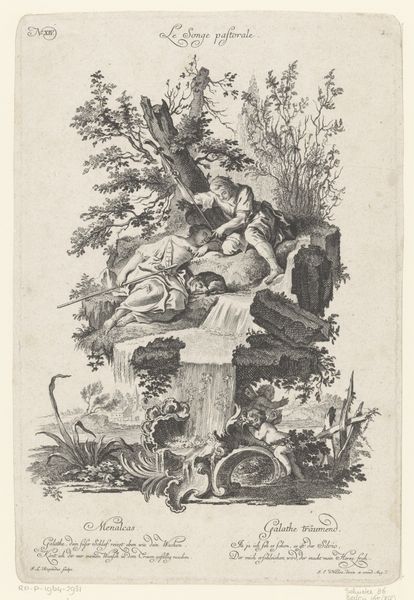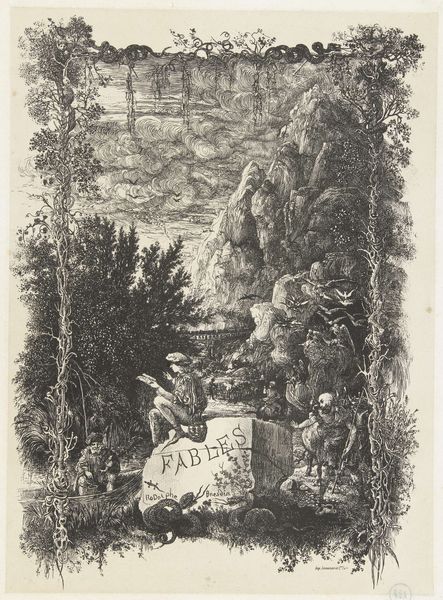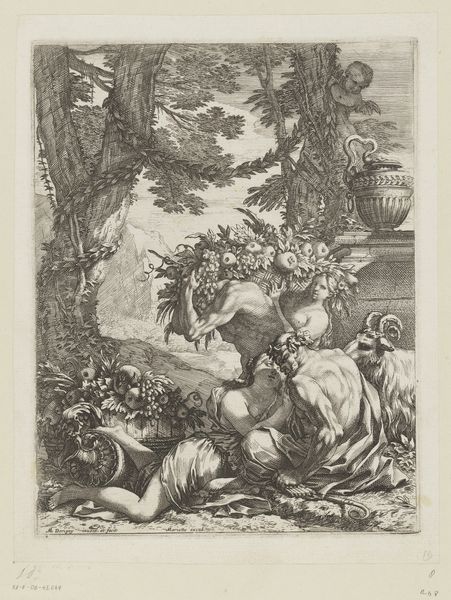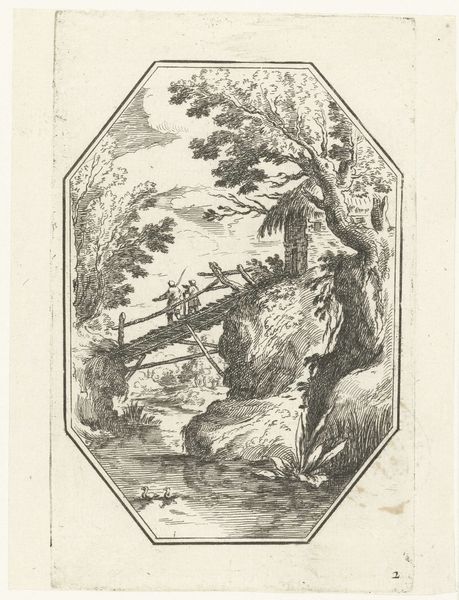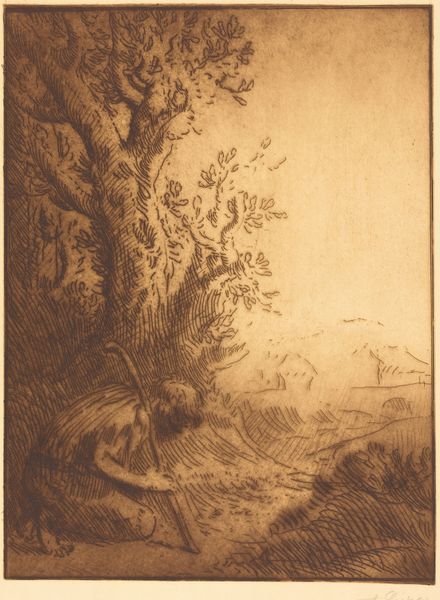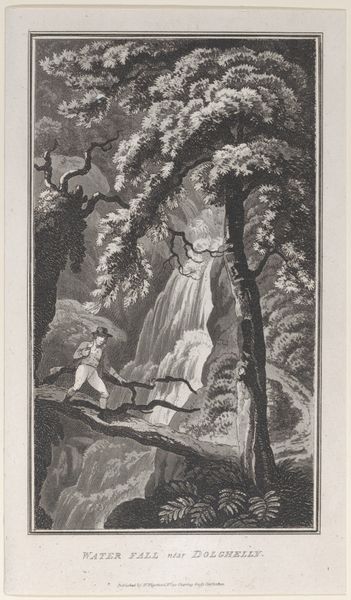
Copyright: National Gallery of Art: CC0 1.0
Editor: Here we have Emmanuel Phelippes-Beaulieu's "View of Santron," created in 1854 using pencil. It feels almost like a meticulously documented dream. What strikes you most about this seemingly quiet landscape? Curator: It's quiet, yes, but that quiet resonates with the societal expectations of landscape art at that time. Think about it: in 1854, the relationship between humans and nature was undergoing a dramatic shift with industrialization. How might an idealized, 'untouched' landscape like this serve as a visual argument, maybe even a quiet form of resistance against that rapid change? Editor: That's interesting. A resistance against industrialization. So, you're saying it’s not just a pretty picture. Curator: Precisely! Consider also the figures, almost hidden in the lower right. How does their small scale in relation to the landscape inform your understanding? Does it speak to human dominance or perhaps to the humbling power of nature, reflecting ideas present in Romanticism? Editor: I see what you mean. They almost blend in. Maybe it suggests we're a part of nature, not separate from it. Does the medium itself—pencil—contribute to this reading? It seems very…intimate. Curator: Absolutely. Pencil, unlike the grand scale of oil painting, lends itself to detail and observation. The very act of drawing creates an intimate relationship between the artist and the environment. Also, the use of pencil drawings is tied to class: oil painting requires wealthy patrons. Drawings could be produced more cheaply for consumption by the rising middle classes. Does knowing that make you think of it differently? Editor: Definitely. It makes me wonder about who the intended audience was, and how that might have influenced the artwork's message. This artwork carries so many layers within it. Curator: Exactly. What seems at first a straightforward depiction reveals itself as a nuanced statement about society, class, and the changing relationship between humanity and nature, doesn't it? Editor: It does. I'll never look at a "simple" landscape the same way again. Thank you!
Comments
No comments
Be the first to comment and join the conversation on the ultimate creative platform.
